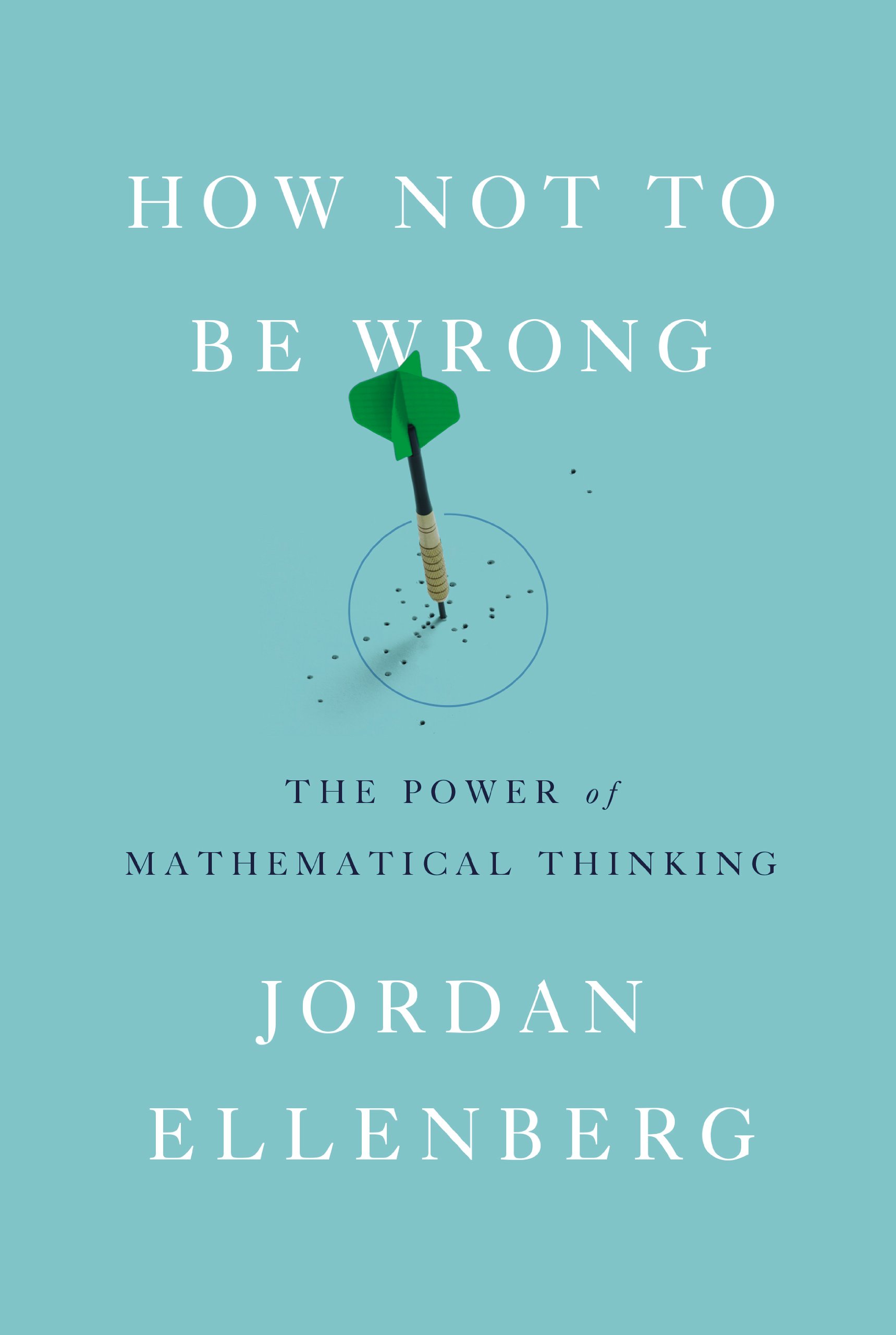
"I heard about it on NPR!" And what a fun read! Accessible to the layperson, this book tells and shows that math isn't just about passing a class in high school and then for a few select elites, but it is a way to look at the world so that things make sense, and it is for everyone.
I do admit there were a few chapters I didn't get into as much. But there were so many good ones! I found myself wishing this was required reading... in high school, or definitely in college for programs such as mine, where math is foundational but not the focus.
I enjoyed so many of the topics that Ellenberg illuminated, but these were my favorites:
1. how to teach math-- this was something of a soapbox tangent, but something I found myself wanting to give a hearty "amen" to. An excerpt from "An aside: how to get partial credit on my calculus exam."
"Working and integral of performing a linear regression is something a computer can do quite effectively. Understanding whether the result makes sense--or deciding whether the method is the right one to use in the first place--requires a guiding human hand. When we teach mathematics we are supposed to be explaining how to be that guide. A math course that fails to do so is essentially training the student to be a very slow, buggy version of Microsoft Excel.
And let's be frank: that is really what many of our math courses are doing."
He goes on to explain that in the "math wars," some favor the "traditional" approach of memorizing algorithms, emphasizing arriving at the correct answer, while others emphasize approximation and meaning. To paraphrase, Ellenberg thinks both are necessary: students should memorize multiplication tables, AND be able to know at the end of a long calculus problem whether their answer makes sense (and why).
2. statistical significance (and lack of it)
First, see: https://xkcd.com/882/
"What if the green jelly bean were tested twnty times by twenty different research groups in twenty different labs? Nineteen of the labs found no sattistically significant effect. They didon't write up their results-- who's going to publish the bombshell "green jelly beans irrelevant to your complexion" paper? The scientists in the twentieth lab, the lucky ones, find ta statistically significant effect, because they got lucky--but they don't know they got lucky. For all they can tell, their green-jellybeans-cause-acne theory has been tested only once, and it passed" (152).
"This is the so-called file drawer problem--a scientific field has a drastically distorted view of the evidence for a hypothesis when public dissemination is cut off by a statistical significance threshold" (152).
Ellenberg explains the null hypothesis and its importance, and how it is often not considered during interpretation of research. We often don't consider the whole picture.
I found this especially illuminating in regard to my field: nursing is trying to become a profession more and more "evidence-based" and nursing journals are full of research. However, I am regularly astounded at how small sample sizes are, and the lack of replication of data I see before findings are turned into gold standards.
Ellenberg offers hope that more experts are realizing that change needs to happen, and says the APA is starting a new genre of articles that are studies attempting to replicate breakthrough findings, and they are "accepted for publication before the study is carried out. If the outcomes support the initial finding, great news, but if not, they're published anyway, so the whole community can know the full state of the evidence" (162).
3. eugenics--Ellenberg discusses great contributions to mathematics of Francis Galton, who also has been described as the father of eugenics. "What can I say? Mathematics is a way not to be wrong, but it isn't a way not to be wrong about everything... Wrongness is like original sin; we are born to is and it remains always with us, and constant vigilance is necessary if we mean to restrict its sphere of influence over our actions. There is real danger that, by strengthening our abilities to analyze some questions mathematically, we acquire a general confidence in our beliefs, which extends unjustifiably to those things we're still wrong about" (335).
4. public opinion majorities--"The 'majority rules' system is simple and elegant and feels fair, but it's at its best when deciding between just two options. Any more than two, and contradictions start to seep into the majority's preferences." Ellenberg gives the example of Obamacare. Interpretations of polls have declared "Majority of Americans oppose Obamacare!" and "Majority of Americans want to preserve or strengthn Obamacare!" and both are somewhat misleading. Ellenberg shows that both are incomplete, since there are really three groups of Americans--those who want to leave the law alone, those that want to kill it, and those who want to make it stronger. "And each of the three choices is opposed by most Americans."
Bahaha! So many things I will think about differently (and hopefully, less wrongly) in the future!
No comments:
Post a Comment